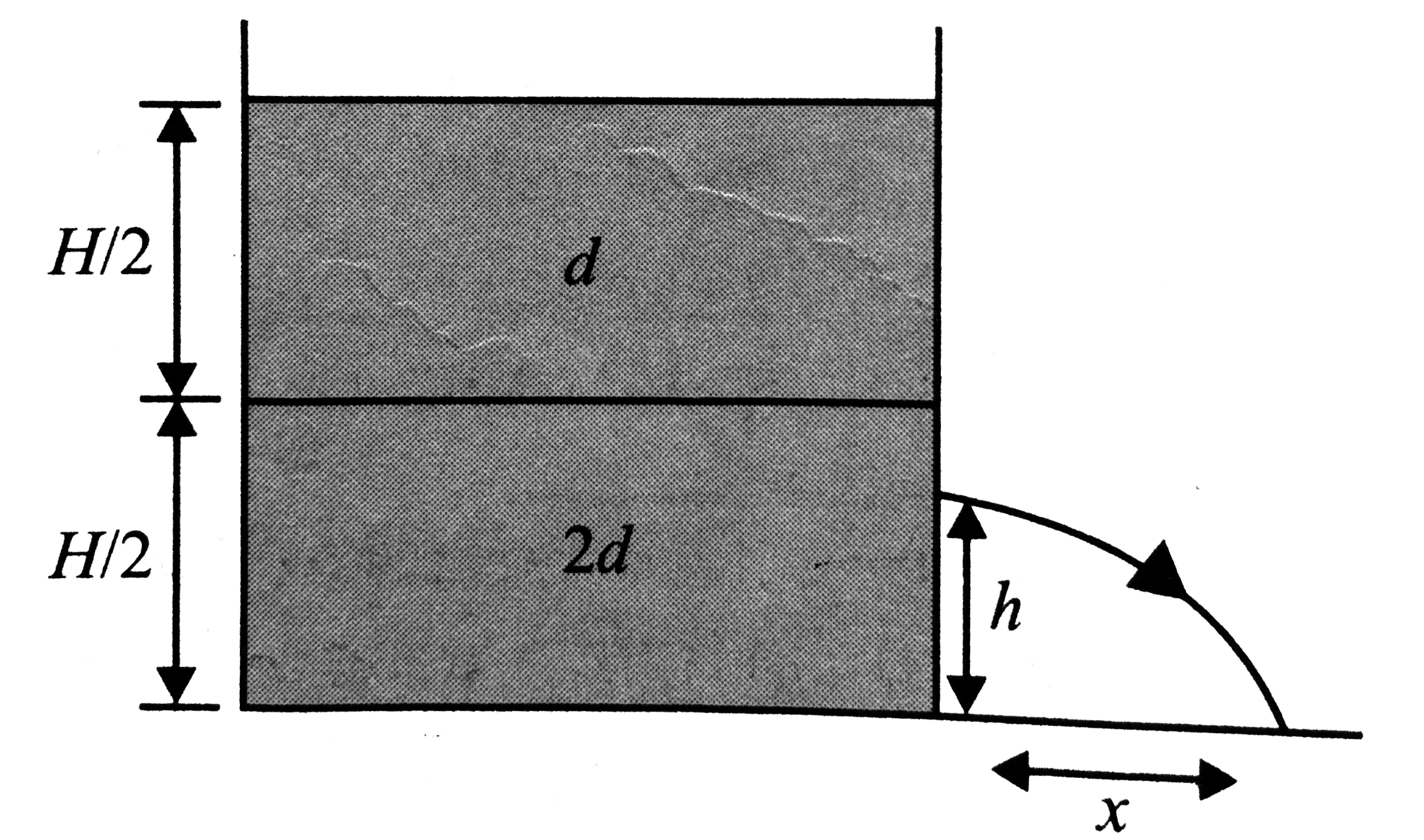(A) : The velocity of flow of a liquid is smaller when pressure is larger and viceversa.
(R ) : According to Bernoulli's theorem, for the stream line flow of an ideal liquid, the total energy per unit mass remains constant.
Both (A) and (R ) are true and (R ) is the correct explanation of (A)
Both (A) and (R ) are true and (R ) is not the correct explanation of (A)
(A) is true but (R ) is false
Both (A) and (R ) are false
The correct Answer is:A
Topper's Solved these Questions
- MECHANICAL PROPERTIES OF FLUIDS BOOK - AAKASH SERIESCHAPTER - MECHANICAL PROPERTIES OF FLUIDS EXERCISE - EXERCISE-2
68 Videos
- MECHANICAL PROPERTIES OF FLUIDS BOOK - AAKASH SERIESCHAPTER - MECHANICAL PROPERTIES OF FLUIDS EXERCISE - EXERCISE-3
43 Videos
- MECHANICAL PROPERTIES OF FLUIDS BOOK - AAKASH SERIESCHAPTER - MECHANICAL PROPERTIES OF FLUIDS EXERCISE - EXERCISE-IA
175 Videos
- LAWS OF MOTIONBOOK - AAKASH SERIESCHAPTER - LAWS OF MOTIONEXERCISE - PRACTICE EXERCISE
108 Videos
- MECHANICAL PROPERTIES OF SOLIDSBOOK - AAKASH SERIESCHAPTER - MECHANICAL PROPERTIES OF SOLIDSEXERCISE - EXERCISE - 3
26 Videos
Similar Questions
Assertion: The velocity of flow of a liquid is smaller when pressure is larger and vice versa.
Reason: According to Bernoulli's theorem, for the stream line flow of an ideal liquid, the total energy per unit mass remains constant.
View SolutionAc cording to Bernoulli's theorem for the streamline flow of an ideal liquid, the sum of pressure energy/mass, kinetic energy/mass and potential energy /mass remains constant at every cross section, throughout the liquid flow. i.e., Pρ+12υ2+gh = cosntant, where the symbols have their usual meaning. Note that an ideal liquied is the one, which is perfectly incompressible, irrotational and non visous. Read the above passage and answer the following question ? (i) At what speed will the velocity head of a stream of water be equal to 40 cm ? (ii) What is the implication of Bernoulli's theorem in day to day life ?
View Solution
Knowledge Check
Assertion: The velocity of flow of a liquid is smaller when pressure is larger and viceversa.
Reason: According to Bernoulli's theorem, for the stream line flow of an ideal liquid, the totla energy per unit mass remains constant.AIf both assertion and reason are true and reason is the correct explanation of assertionBIf both assertion and reason are true but reason is not the correct explanation of assertionCif assertion is true but reason is false.Dif both assertion and reason are false.In stream line flow of liquid, the total energy of liquid constant at ______.
Aall pointsBinner pointsCouter pointsDnone of theseIn steam line flow of liquid, the total energy of liquid, the total energy of liquid is constant at :
Aall pointsBinner pointsCouter pointsDnone of these
In steam line flow of liquid, the total energy of liquid, the total energy of liquid is constant at :
View SolutionThe velocity distribution curve of the stream line flow of a liquid advancing through a capillary tube is
View SolutionThe liquid flow is most stream lined when
View SolutionAssertion: An ideal fluid is flowing through a pipe. Speed of fluid particles is more at places where pressure is low.
Reason: Bernoulli's theoren can be derived from work-energy theorem.
View SolutionFluids at rest exert a normal force to the walls of the container or to the sruface of the body immersed in the fluid. The pressure exerted by this force at a point inside the liqid is the sum of atmospheric pressure and a factor which depends on the density of the liquid, the acceleration due to gravity and the height of the liquid, above that point. The upthrust acting on a body immersed in a stationary liquid is the net force acting on the body in the upward direction. A number of phenomenon of liquids in motion can be explain by Bernoulli's theorem which relates the pressure, flow speed and height for flow of an ideal incompressible fluid.
A container of large uniform corss sectional area. A resting on a horizontal surface holds two immiscible, non viscous and incompressile liquids of densities d and 2d, each of height H/2 as shown in the figure. The lower density liquid is open to the atmosphere having pressure P0.
Situation I:
A homogeneous solid cylinder of length L(L<H/2). cross sectional area A/5 is immersed such that it floats with its axis vertical at liquid -liquid interface with lenght L/4 in the denser liquid.
The total pressure at the bottom of the container is
View Solution
